Aponogeton crispus
Scientific name: Aponogeton crispus
Family: Aponogetonaceae
Maximum size reached under cultivation: 25 - 50 cm (9.84 - 19.69 inch)
014
Recommended pH range: 6.5 - 7.5
Recommended water hardness: 2 - 12°dGH (35.71 - 214.29ppm)
0°C 32°F30°C 86°F
Recommended temperature range: 22 - 28 °C (71.6 - 82.4°F)
Preferred propagation method: Seeds
Native to: Sri Lanka
Growth rate: Fast
Recommended substrate: Fine gravel
Lighting requirements: Medium
Ideal placement in tank: Midground
🌿 Family
Aponogetonaceae
🏷️ Common Name
Aponogeton crispus, sometimes called "Crisped Aponogeton"
🌍 Origin
Sri Lanka; this species grows in slow-moving or seasonal waters, often in areas that dry out periodically. In its natural habitat, it thrives submerged most of the year.
📍 Planting Area
Aponogeton crispus is best placed in the midground to background of the aquarium. Its long, rippled leaves add vertical softness and work well in open layouts or behind smaller plants.
🔦 Lighting Requirements
Moderate to bright lighting is ideal. Under proper lighting, the plant maintains a healthy green color and grows faster.
💚 Propagation
Aponogeton crispus reproduces through seeds and occasionally by natural bulb division. In aquariums, it may produce flower stalks that reach the surface, where pollination can occur. However, seed propagation is rare in home tanks. Commercial growers often use tuber division or grow plants from dormant bulbs.
⚙️ Difficulty
Easy to Medium; although it is undemanding and fast-growing, it benefits from stable water parameters and regular nutrient supply.
🌡️ Water Parameters
Temperature: 22–28 °C (71.6–82.4 °F)
pH: 6.5–7.5
Water Hardness: Soft to moderately hard (2–12 dGH)
📝 Short Description
Aponogeton crispus is a graceful and hardy aquatic plant with long, undulated leaves that add a soft, flowing look to aquascapes. It can reach up to 50 cm in height and serves well as a centerpiece in medium to large tanks. The plant may occasionally enter a dormant period, during which it stops growing and loses some leaves. This is normal and temporary—growth resumes in a few weeks if the bulb remains healthy. It is fully aquatic and should be kept submerged. Unlike many Aponogetons, it is less prone to excessive flowering and is therefore better suited for long-term aquarium use.
🤝 Compatibility
This plant is compatible with most peaceful fish and is generally ignored by herbivorous species due to its firm leaf structure. It offers cover for shy fish and shrimp, making it a useful addition to community aquariums.
❓ Frequently Asked Questions (FAQ)
-
Does Aponogeton crispus need CO2 supplementation?
No, CO2 is not required for healthy growth, but moderate supplementation can encourage faster and more robust development, especially under bright lighting. -
Can Aponogeton crispus grow in low-tech aquariums?
Yes, it is a great option for low-tech setups. It grows well without special equipment as long as lighting and substrate nutrients are adequate. -
Why is my Aponogeton crispus losing leaves?
It may be entering a natural dormancy phase. This is typical for the species and should not be a cause for concern. Maintain stable conditions and growth will resume. -
How do I prevent it from becoming too tall?
You can trim older leaves close to the bulb. However, it’s best used in taller tanks or background areas where vertical growth is welcome. -
Is it safe with herbivorous fish?
Generally yes. Its leaves are tougher than many other plants, and most herbivorous fish tend to ignore it.
🔢 Category
Aquatic

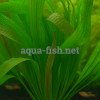 Aponogeton bovianus
Aponogeton bovianus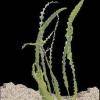 Aponogeton longiplumulosus
Aponogeton longiplumulosus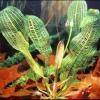 Aponogeton madagascariensis
Aponogeton madagascariensis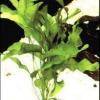 Aponogeton natans
Aponogeton natans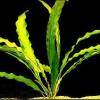 Aponogeton rigidifolius
Aponogeton rigidifolius Aponogeton ulvaceus
Aponogeton ulvaceus Aponogeton undulatus
Aponogeton undulatus